What’s new in version 2023.3
Welcome to Version 2023.3 of Axiom Enterprise Decision Support!
This release of Axiom Enterprise Decision Support includes the following new features and enhancements:
Interim costing
Use interim costing to leverage previously costed cost models and assign those costs to newly loaded data without having to process a cost model. This feature is helpful when you do not plan to run costing for a while, but continue to load data.
Applying interim costs to your new data lets you run analysis on the most current data and avoid waiting until you run the cost processing analysis again. For example, if you load data nightly, you could configure interim costing and schedule it to run as the last step of your nightly load. That data would have costs associated with it by the next morning versus waiting until it is time to run monthly costing.
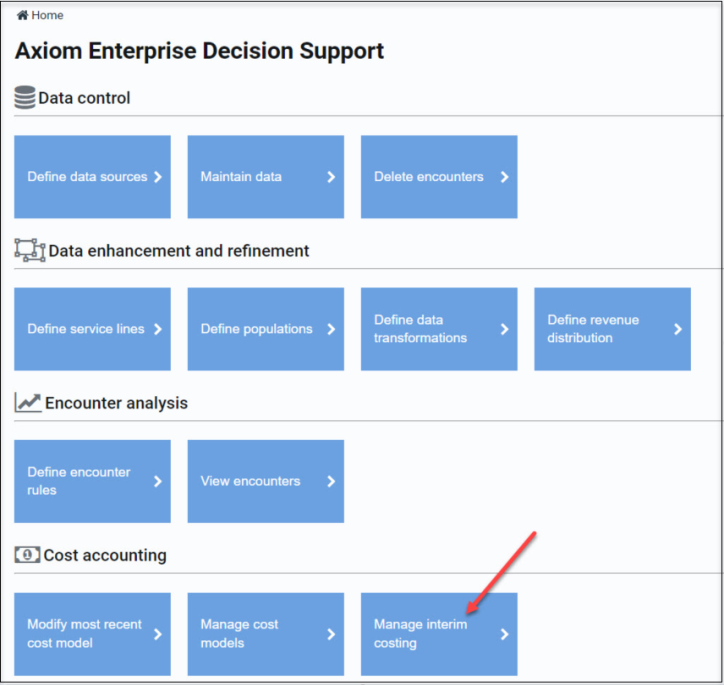
Revenue distribution
Use revenue distribution to include non-adjudicated payments and adjustments (such as payor quality incentives, cost report settlements, and so on) in your decision-support reporting. This feature provides a user interface-standardized process for managing these payment and adjustment definitions and eliminates the need for historically created customized approaches.
Create targeted distribution rules that identify the applicable encounter population to receive these payments or adjustments, along with a basis for spreading the amount.
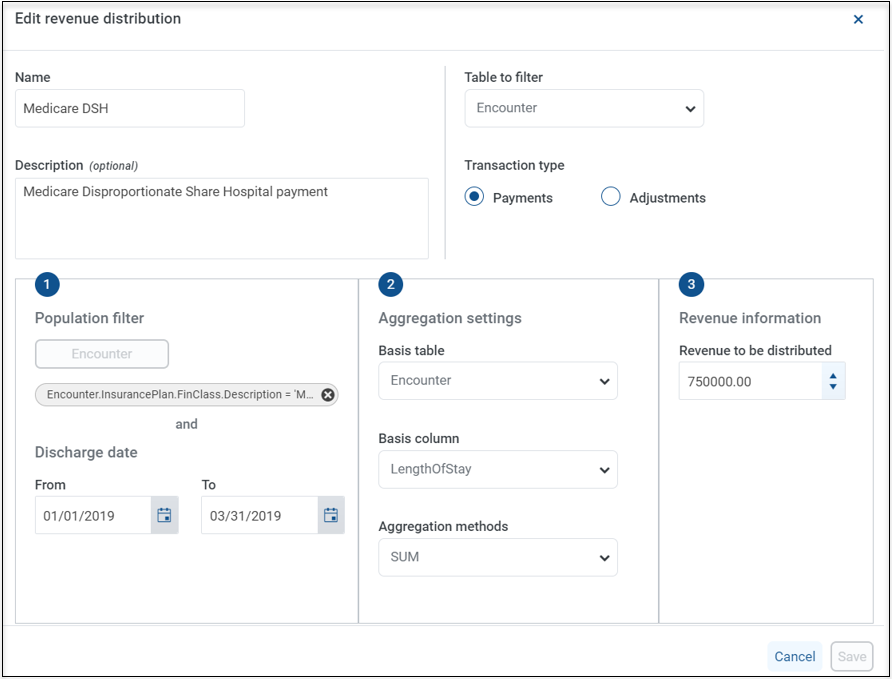
The Define revenue distribution definition page provides key information about existing definitions. From this page, you can:
-
Select a definition and move it to the edit page to review or update it.
-
Modify the revenue amount to be distributed.
-
Modify the discharge date.
This page simplifies ongoing maintenance of the most common inputs and allows multiple definition changes from one location by clicking Save. You can also select which definitions to process from this page.

During processing, the calculated amounts distributed to encounters are saved in the EncounterPayments table as new transactions. To simplify auditing and review, the transaction IDs in the table are prefaced with “RD_” and tie directly to the transaction ID displayed on the Revenue Distribution definition page.
Transactions that are posted to Encounter Payment include the applicable payment type (PAY or ADJ). If you rerun any previously published revenue distribution transactions, transactions that overlap with the population filter discharge date range are deleted.

Additionally, each revenue distribution definition generates a new record in the TransactionCode reference table for report writers to reference the revenue distribution name. This record is stored in the LongDescription field.

Relative Value Units (RVU) maintenance
The reimagined Maintain RVU page provides more flexibility when selecting which cost items to review and offers multiple options for incorporating updates.
You are no longer restricted to view only items within a single department. Using standard Axiom filter wizard behavior, you can select precisely what to review (for example, you can view the same cost item or cost item revenue code across all departments).
The page provides a default view of all cost categories that are sorted by costcat ID. You can select which cost categories are visible by clicking Select cost categories, and then clicking one or more cost items. By sorting the values in the cost category columns, you can view which cost items have similar RVUs or no RVUs.
You can modify the RVUs directly on the page by leveraging the new mass-save functionality. Click in the RVU cells, make changes or delete values for one or multiple items and cost category columns, and then click Save.
You are no longer restricted to edit only one line at a time.
You can also download filtered data into Excel to modify and upload these changes.
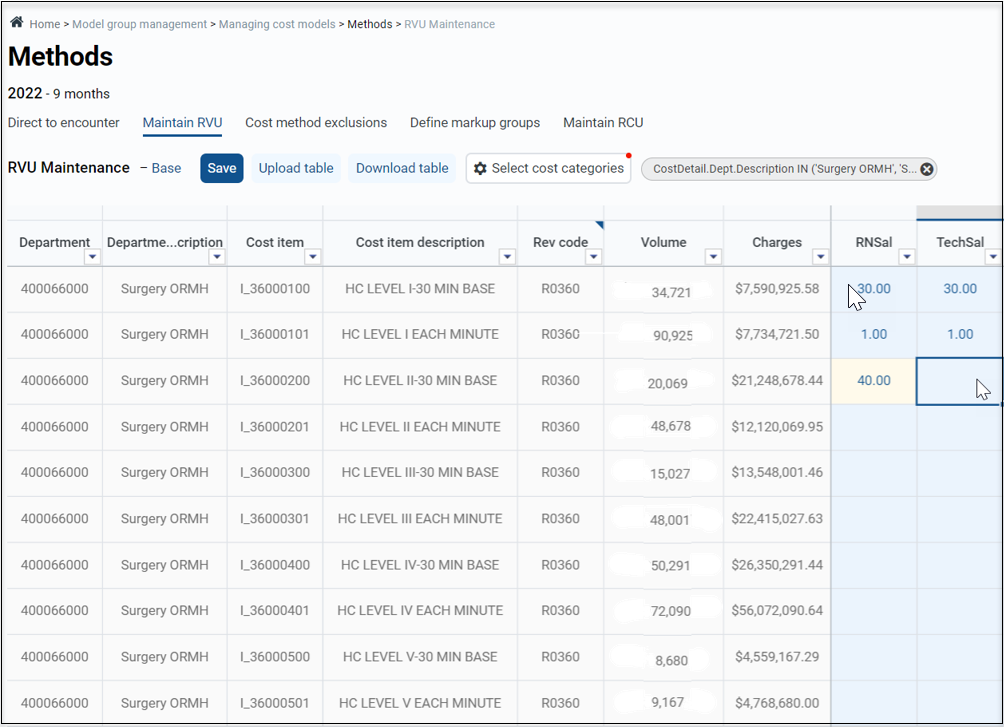
Delete encounters
Use the new interface to delete unwanted encounters from Axiom.
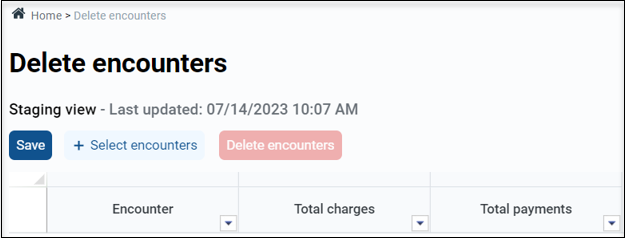
You can select encounters by:
-
Using the filter wizard.
-
Downloading a template, and then uploading it when complete.
-
Manually entering encounters. Use the manual entry option to enter encounter numbers or paste copied data from an external source.
You can also use multiple options to compile the staging view on the Delete encounters page.
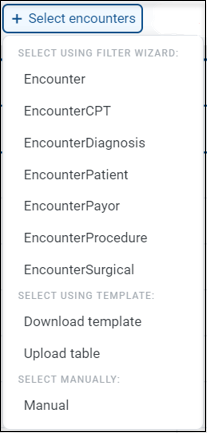
After you save the staging list, the grid displays total charges and payments for the encounters. You can start the deletion process immediately or schedule it to start later. You can use either option to cancel at this point, if necessary. If you schedule the deletion, you can still edit the staging list up to 10 minutes before the start of the scheduled job. After that time, the Delete encounters page is locked and a prompt notifies you that the job is in progress.
